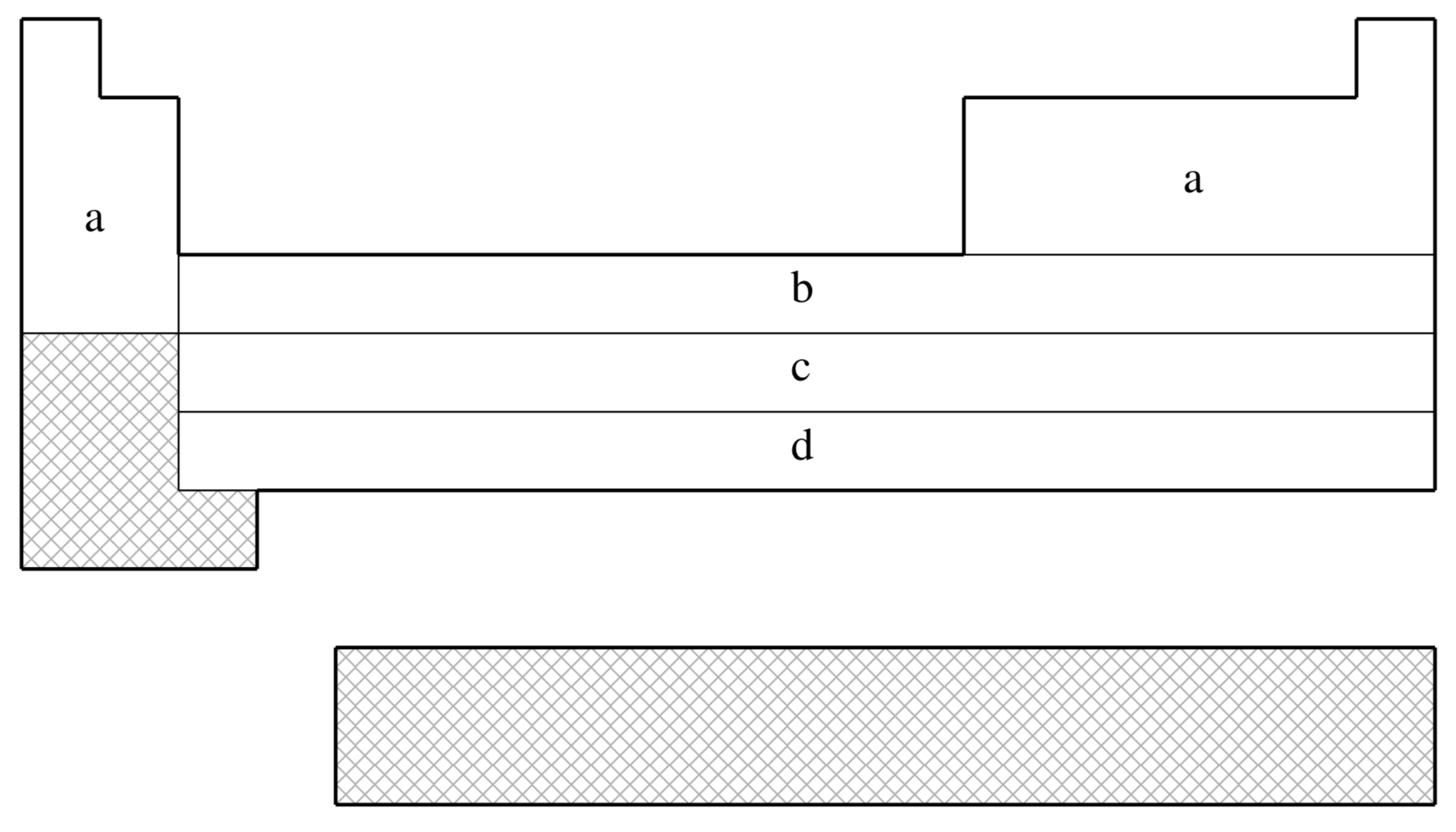
fit-CRENBS is not available for shaded elements
| (a) | No ECP; Pople STO-3G basis used |
|---|---|
| (b) | Hurley, Pacios, Christiansen, Ross, & Ermler (Ref.
526
J. Chem. Phys. (1986), 84, pp. 6840. Link ) |
| (c) | LaJohn, Christiansen, Ross, Atashroo & Ermler (Ref.
654
J. Chem. Phys. (1987), 87, pp. 2812. Link ) |
| (d) | Ross, Powers, Atashroo, Ermler, LaJohn & Christiansen (Ref.
1039
J. Chem. Phys. (1990), 93, pp. 6654. Link ) |
| (e) | Nash, Bursten, & Ermler (Ref.
857
J. Chem. Phys. (1997), 106, pp. 5133. Link ) |
| Element | Core | Max Projector | Valence |
|---|---|---|---|
| H–He | none | none | (1s) |
| Li–Ne | none | none | (2s,1p) |
| Na–Ar | none | none | (3s,2p) |
| K–Ca | none | none | (4s,3p) |
| Sc–Zn | [Ar] | (1s,0p,1d) | |
| Ga–Kr | [Ar]+3d | (1s,1p) | |
| Y–Cd | [Kr] | (1s,1p,1d) | |
| In–Xe | [Kr]+4d | (1s,1p) | |
| La | [Xe] | (1s,1p,1d) | |
| Hf–Hg | [Xe]+4f | (1s,1p,1d) | |
| Tl–Rn | [Xe]+4f+5d | (1s,1p) |